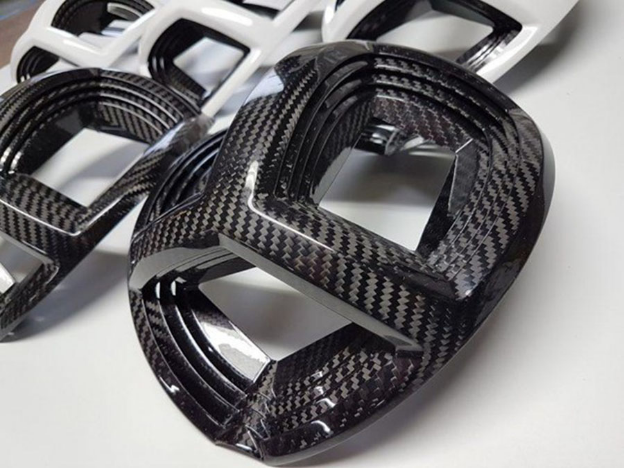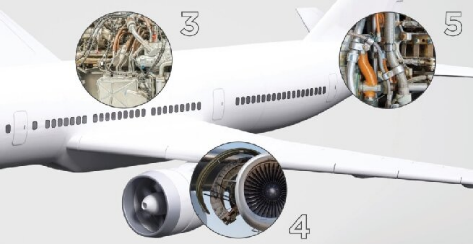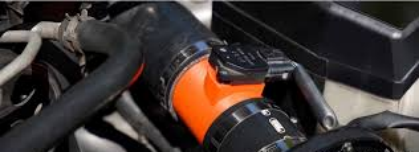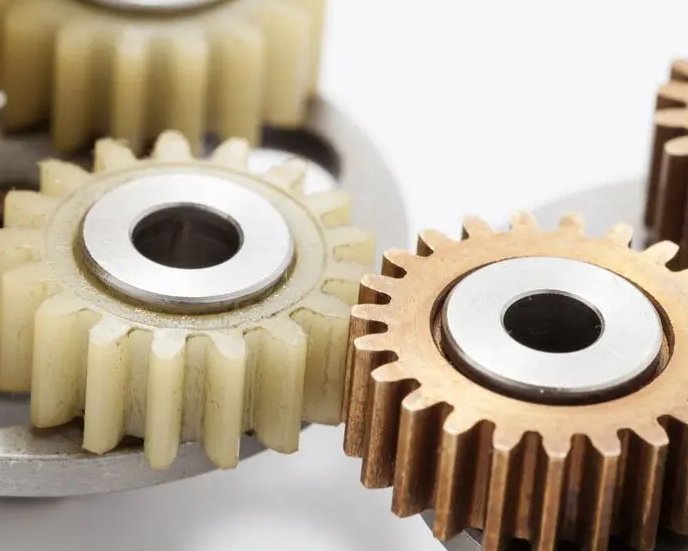Metal Replacement Guide: Metals to Advanced Polymers and Composites
 Jun 13,2025
Jun 13,2025

You may have observed that the use of metals is decreasing in the industries, especially in the transport industries. The materials, such as advanced polymers and composites, have emerged as potential candidates which have the same level of properties as metals. This article explores information related to every aspect of how metals are being replaced with materials and how these advanced materials have revolutionised industries.

What Is Metal Replacement?
Metal replacement means that it is exchanged with materials that exhibit the same properties; in simple words, the metal is replaced by non-metal materials. If you look at the global market, it is expected that it will reach $400 billion by 2032, 9% annual growth. So, what is the goal? The goal is to achieve the same level of applications from non-metals by using advancements.
Definition and Market Trend
As we mentioned earlier, the market is booming at this time. There are many reasons for this increased demand for non-metals, such as light-weight, cost-effectiveness and durability.
Primary Factors When Compared to Metal
These are the main things you require when you shift from metal to non-metal:
Flexible Design
The most important: flexibility in the design. Metals are solid materials which are difficult to shape into any desired design. Unlike the advanced polymers and composites provide you with that flexibility.
System Optimisation
Every metal is heavier than polymers or composites. So, we cannot optimise the system efficiently. Advanced polymers and composites are lightweight materials, so we have the facility of reducing fuel consumption due to their lightweight.
Faster Production
Non-metals are easy to manufacture. For instance, injection moulding cycles beat metal casting easily.
Lower Costs
Metals are expensive materials as compared to polymers and composites. Polymers offer ease of machining, so they have lower costs for the products.
Regulatory Compliance
You do not need to worry about the regulatory compliance of non-metals. They effortlessly meet RoHS and REACH standards.
When Is Metal Still the Best Choice?
Yes, you cannot ignore metals at all. There are many fields where metals have no replacement. For instance, performance at ultra-high temperatures or conductivity in electronics.
Material Options Beyond Metals
In this section, you will study how some materials are better than metals and can replace metals for many applications.
Engineering Thermoplastics
These materials are synthetically made polymers to provide good mechanical properties like metals.
PEEK Replace
Polyether Ether Ketone polymer is considered a heat-resistant material. It can perform up to 140°C. It is commonly used in aerospace.

PPS Replace
Polyphenylene Sulfide is an inert material. You can use it in industrial valves.
PA6 GF Replace
It is a nylon filament containing glass fibre reinforcement. You can use it for sturdy automotive parts.

Fibre-Reinforced Composites
These are the composites which have been in use in the transport industry for many years.
CFRP Replace
Carbon fibre reinforced polymer composite provides the highest strength-to-weight ratio and is used for high-temperature applications as well.
GFRP Replace
Glass fibre reinforced polymer composite is used in marine and construction applications.
Metal-Matrix Composites and Technical Ceramics
Metal-matrix composites are those composites in which metals like aluminium are the matrix combined with reinforcement fibres. Meanwhile, technical ceramics, such as alumina, provide the highest hardness, thermal stability and insulation.

Metals vs. Replacements: Property Comparison
The following table shows the difference in mechanical properties of 3 different materials, i.e. one metal and two non-metals. CFRP provides higher strength than metal at the lowest density.
|
Property |
Steel |
PEEK |
CFRP |
|
Density (g/cm³) |
7.8 |
1.3 |
1.6 |
|
Tensile Strength |
500 MPa |
90 MPa |
600 MPa |
|
Conductivity |
High |
Low |
None |
Strength-to-Weight Ratio
Metals have been replaced by CFRP in application scenarios like racing-drone frame, Automotive brake pedal, etc., because of the high strength-to-weight ratio. CFRP is a lightweight material, provides high speed and low fuel consumption.
Thermal & Electrical Conductivity Gaps
Application scenarios like MRI head-coil frame use PEEK material to avoid interference with electricity.
Corrosion and Chemical Resistance Gains
Environmental scenarios like coastal salt spray, etc., use polymers because metals rust in such environments.
Design for Metal Replacement
When you swap metals with polymers or composites, you cannot just copy the design of the metal. You must change the design of the part to attain the best properties from the non-metals. Let's figure out the criteria in this section.
Stiffness Recovery
Through some alterations in the design, you can recover stiffness of non-metals, i.e. polymers & composites. For instance:
- Ribs & Gussets:If you add thin reinforcing ribs, you'll boost stiffness without significant weight gain.
- Bosses & Fillets:When you strengthen load-bearing points with rounded fillets, you prevent stress concentrations.
- Honeycomb/Core Structures:If you use lightweight internal geometries (like sandwich panels), you get metal-like strength at a fraction of the weight.
Prevent Moulding Defects
To effectively prevent common molding defects in your plastic components, you must carefully maintain uniform wall thickness throughout the design, strategically manage knit-line locations in low-stress areas, and incorporate proper draft angles for smooth part ejection.
Prove The New Design
Before cutting moulds, use CAE tools to test your design:
- CAE: Simulation validates your parts first.
- FEA:You predict stress points and deformation.
- Moldflow:You check filling and cooling issues.
- Thermal Analysis:You verify high-temp stability.
- Engineers optimised a CFRP drone arm, cutting 35% weight while keeping strength.
Manufacturing Processes for Replacement Materials
When replacing metals, you need to carefully choose the right manufacturing process based on your material properties and part specifications. Here's how to match your project to the best method for optimal results.
Injection Moulding
Best for high-volume (100,000+ parts/year) thermoplastic components under 10 kg. You'll get fast cycle times and complex geometries at low per-part costs.
Compression or RTM Moulding
Ideal for thermoset composites when you need superior strength. Typical for medium-volume runs (1,000-50,000 parts/year) of larger components.
Subtractive Manufacturing for Complex Parts
When you replace metals, choosing the right manufacturing method ensures optimal performance and cost-efficiency. Here's how to match your project needs:
CNC Turning Replacement Materials
You precisely machine PEEK, PEI, or acetal rods into high-tolerance shafts and bushings.
CNC Milling Replacement Materials
You transform PA6 GF and CFRP blocks into complex, lightweight structural components with tight tolerances.
CNC Grinding Replacement Materials
You achieve sub-micron precision on ceramics and carbides for demanding medical and industrial applications.
Industry Replacement Materials Case Studies
You're not alone in seeking better alternatives to metal components. Across industries, engineers like you are achieving remarkable results by switching to advanced polymers and composites. These real-world examples show how material replacement solves specific
Metal Replacement for Light Parts
Problem
You're facing strict emissions regulations with your current steel pedal brackets, where excessive mass (typically 800-1200g per bracket) directly impacts vehicle fuel economy and performance. The heavy components also increase assembly line ergonomic challenges.
Material Switch
You adopt precision-engineered PA6 GF30 (30% glass-filled nylon) through optimized injection molding, leveraging advanced flow simulation to ensure perfect fiber orientation in high-stress areas while maintaining tight dimensional tolerances (±0.2mm).
Outcome
Your redesigned brackets deliver a 40% weight reduction (now just 480-720g) with equivalent load-bearing capacity (≥200MPa tensile strength), while cutting production costs by 15% through faster cycle times and eliminating secondary machining operations. The solution helps achieve Euro 7 emissions compliance.
Metal Replacement for Faster Cycle Time
Problem
Your current magnesium laptop shells face production bottlenecks due to slow die-casting cycles (3-4 minutes per part) and high scrap rates from porosity defects, driving up manufacturing costs.
Material Switch
You implemented advanced CFRP (carbon fiber-reinforced polymer) compression molding with automated fiber placement, enabling precise control over material distribution and fiber orientation.
Outcome
Your streamlined production now achieves 30% faster cycle times (under 2 minutes per part) with flawless surface finishes, while reducing material waste by 22% and eliminating secondary finishing operations.
Metal Replacement for MRI-Safe Medical Tools
Problem
Your conventional stainless steel surgical instruments create disruptive MRI image artifacts and pose safety risks in scanning environments, while also being prone to corrosion after repeated sterilization cycles.
Material Switch
You transition to precision-engineered medical-grade PEI (polyetherimide) polymer handles, leveraging advanced injection molding techniques to maintain dimensional stability and ergonomic performance.
Outcome
Your redesigned surgical tools achieve full MRI compatibility, withstand hundreds of autoclave sterilization cycles (up to 134°C), and reduce production costs by 50% compared to machined metal alternatives - all while improving surgeon comfort during prolonged procedures.
Sustainability and Compliance Benefits
Switching from metals to advanced polymers and composites doesn't just improve performance, it also helps you meet strict environmental regulations and sustainability goals.
Cut CO₂ Emissions and Recyclability
Steel production emits 2.3 kg CO₂ per kg, while glass-filled nylon (PA6 GF) generates just 0.6 kg CO₂ per kg (ISO 14067). You reduce emissions by 74% while maintaining strength. Plus, many engineering plastics are recyclable, helping you close the material loop.
Meeting RoHS, REACH, and Auto OEM Green Targets
You can avoid hazardous substances (like chromium in stainless steel) by using RoHS/REACH-compliant polymers. Automotive OEMs now demand 10-30% recycled content—achievable with recycled PA6 GF or CFRP. Your switch ensures compliance while futureproofing against stricter regulations.
Common Pitfalls to Avoid When Replacing Metals
When you're transitioning from traditional metals to advanced polymers and composites, there are several important challenges you should be aware of. Understanding these potential issues - and knowing how to solve them - will help ensure your project's success. Let's examine the most common problems and their solutions.
1. Creep and Fatigue in Plastic Components
The Problem: Unlike metals, plastics can slowly deform over time when under constant stress (creep). They're also more susceptible to cracking from repeated loading (fatigue). This is especially concerning for structural parts that bear weight long-term.
The Solution: You can dramatically improve performance by adding reinforcement fibers. Glass fibers (20-30% content) work well for most applications, while carbon fibers (30-40%) provide even greater stability for demanding situations. These additives help plastics resist deformation while maintaining their lightweight advantage.
2. Dimensional Changes at High Temperatures
The Problem: Plastics expand much more than metals when heated (higher CTE). If your design doesn't account for this, you might encounter warping, binding, or loose fits in temperature-varying environments.
The Solution: Smart design can overcome this. You should:
- Leave proper expansion gaps between components
- Use metal inserts in critical areas
- Select high-temperature plastics like PEEK for extreme conditions
- Consider the operating temperature range early in your design process
3. Challenges with Fastening and Joining
The Problem: Traditional metal fastening methods often fail with plastics. Screws can strip threads, adhesives may not bond well, and welding requires special equipment.
The Solution: Modern techniques solve these issues:
- Insert mouldingembeds metal threads directly into plastic parts
- Speciality adhesiveswith primers create chemical bonds to plastic surfaces
- Ultrasonic weldingproduces strong, clean joints for certain plastics
- Mechanical interlockscan replace some fasteners entirely
Conclusion: Not sure about replacing materials?
You can achieve impressive results by replacing metals with lighter parts (40% reduction), faster production (30% shorter cycles), and lower costs (50% savings). But success depends on your approach. You must reinforce plastics against creep, design for thermal expansion, and use proper fastening methods.
If you're uncertain, we can help. At TUOFA, we guide you through material selection, design adjustments, and manufacturing to ensure your project succeeds.
FAQ on Metal Replacement
Which polymer can replace 6061-T6 at 120 °C?
For applications at 120°C, PEI (Polyetherimide) or PPS (Polyphenylene Sulfide) are your best choices. Both offer:
✔ Similar strength to 6061-T6 (tensile strength ~150 MPa)
✔ Continuous service temperatures up to 170-200°C
✔ Excellent chemical resistance
For higher loads, 40% carbon-fiber-reinforced PEEK matches aluminum's stiffness while being 70% lighter.
Can CFRP match mild-steel stiffness?
Yes, but only with proper fiber alignment.
- Unidirectional CFRP can exceed mild steel's stiffness (≥200 GPa vs. 210 GPa) at 1/5th the weight.
- Quasi-isotropic CFRP (equal fibers in 0°/90°/+45°/-45°) reaches ~70 GPa - suitable when multidirectional strength matters.
Key property CFRP lacks steel's ductility, so design for its anisotropic properties.
 Tel/WeChat:
Tel/WeChat:  Email:
Email: 
 Home
Home
 Melting Point of Zinc: Temperature, Alloys, and Industrial Impact
Melting Point of Zinc: Temperature, Alloys, and Industrial Impact 







